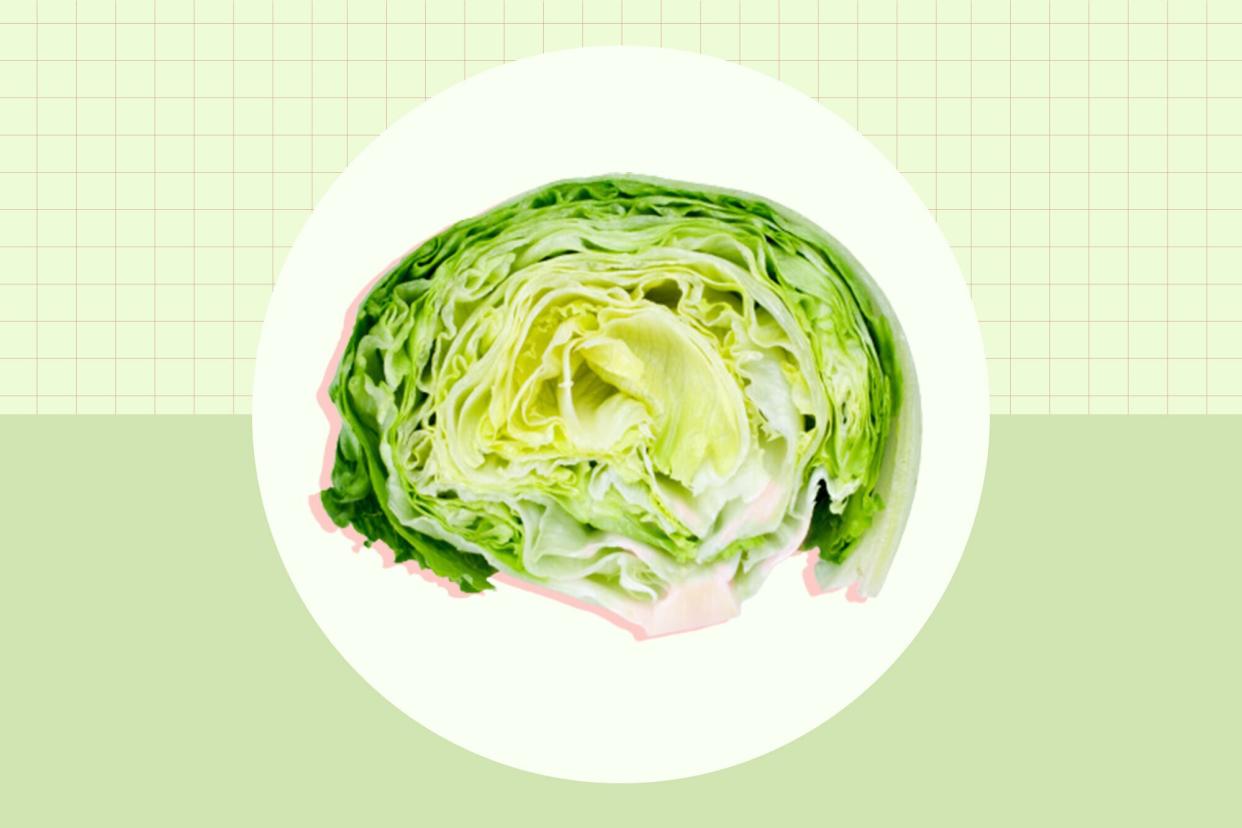Why Does Lettuce Turn Pink?

Getty Images
If you've ever forgotten about the lettuce at the bottom of your crisper and found that the rib has turned from white to pink, you're not alone. While it might be a bit off-putting to see parts of your lettuce turn pink, it doesn't necessarily mean your lettuce should go into the trash. Here's everything to know about why lettuce turns pink.
Why Does Lettuce Turn Pink?
With a mild flavor and nice crunch, romaine has been a longtime salad staple for good reason. But if you've noticed the core of your beloved salad base has changed from white to pink, there are a few main triggers that could be the culprit.
Too much ethylene gas: Ethylene gas is naturally created as certain fruits and veggies ripen, and it can cause your lettuce to turn pink. In particular, bananas, avocados and apples give off a lot of ethylene gas, so make sure your lettuce is stored away from them while in the refrigerator.
Exposure to high temperatures: Keep your lettuce stored in the crisper drawer of your refrigerator to prevent it from being exposed to temperature changes when you open and close the door.
Too much airflow: Once your lettuce bag or container has been opened, the clock starts to tick even faster as the leaves are being exposed to more oxygen. Unlike certain veggies that need extra airflow to stay fresh, the more lettuce has, the more likely it is to turn pink.
There's also a reason you don't see this as frequently in some varieties of greens, explains Trevor V. Suslow, Ph.D., of the University of California, Davis. "This lettuce tissue reaction to harvest and food preparation wounds, over-maturity and several other stressors, is typically more rapid and stronger in loose-leaf lettuces—butter leaf for example—and romaine lettuce than 'iceberg-type' lettuce. Individual varieties vary greatly in the pinking response, and a lot of breeding effort is directed at new types which slow this process following harvest."
Is It Safe to Eat Pink Lettuce?
Unless your lettuce is showing additional signs of deterioration and decay—like sliminess, mold or odors—you're in the clear to enjoy it. Your lettuce should still be crisp (here's a hack to revive wilted lettuce) despite the change in color, so eat it right away and don't let it stay forgotten in the fridge any longer.
How to Stop Lettuce from Turning Pink
Reducing the potential pinkening factors like temperature and ethylene gas exposure, which expedite the pinkening process, will help keep your lettuce fresh and crisp even longer.
If your refrigerator temperature is too high, lettuce may spoil faster as well. "You can't necessarily prevent the lettuce from aging and turning pink, but you can slow down the process by storing it in low-temperature environments," says restaurateur and Restaurant Clicks CEO Brian Nagele. "The coolness of your fridge can preserve the lifespan of your lettuce. Just be sure to store them in an airtight container or in the crisper basket of your appliance to regulate humidity and keep them fresh."
Luckily, there are a few ways to shop smarter for your lettuce before it even makes it into your fridge at home, says Olivia Roszkowski, a plant-centric educator and chef-instructor at the Institute of Culinary Education: "When shopping, pick out produce last. This way the lettuce is not sitting in your cart as you browse the rest of the grocery store. Get food into the refrigerator or use insulated bags to avoid a big change in temperature after grocery shopping. Less time spent in transport means that they will likely not turn pink sooner in the fridge."
Can You Reverse the Pinkening?
Unfortunately, there's no going back to green once your lettuce has turned pink, as the oxidation process is not reversible. The pink rib sections can be prepped for recipes as usual, or try upcycling your lettuce into a yummy juice instead!
"If you don't feel like eating slightly oxidized pink lettuce in a salad, [it's] delicious passed through a juicer with some parsley and cucumber. This is actually my go-to juice of choice and prevents food waste," Roszkowski suggests.
To use up your good lettuces before it's too late, try throwing them on the grill for just a few minutes, like in this Grilled Romaine with Feta recipe or in this quick and easy recipe for Cashew Chicken Lettuce Cups.
Bottom Line
Lettuce can turn pink. The discoloration could be caused by several factors, including exposure to ethylene gas emitted by produce stored with the greens, fluctuations in temperature or exposure to too much oxygen. But, the lettuce is still entirely edible. Use up your greens before they turn pink in these popular recipes: White Bean & Veggie Salad and Egg Salad Lettuce Wraps.

